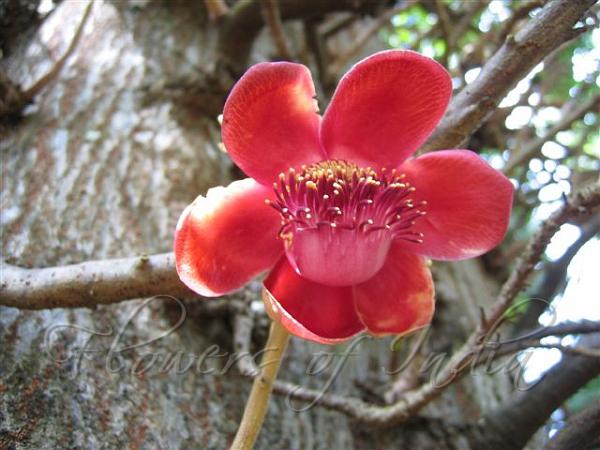|
| Cannon Ball Tree |
|

|

| File size | 848177 |
| Original date | 3/29/25 3:42 PM |
| Resolution | 2048 x 1536 |
| Flash | Flash did not fire, auto |
| Focal length | 40.1mm |
| Exposure time | 1/60s |
| Aperture | 5.6 |
| Focus Distance | |
| Metering Mode | Multi-segment |
| Camera make | NIKON |
| Camera model | COOLPIX A900 |
| Sensor type |
|
|
|
Photo: |
Botanical name: Couroupita guianensis Family: Lecythidaceae (Barringtonia family)
This large deciduous tropical tree, 25 m tall and indigenous to the Amazon
rainforest, is widely planted in the moist South Indian cities in India.
The leaves, up to 15 cm long, are simple with serrate margin.
There are 7 to 12 cm wide waxy, fragrant, pink and dark-red flowers growing
directly on the bark of the trunk.
The tree bears, directly on the trunk and main branches, large globose woody
fruits; they look like big rusty cannonballs hanging in clusters.
The fruit contains small seeds in a white, unpleasant smelling white jelly,
which are exposed when the upper half of the fruit goes off like a cover.
The hard shells are used to make containers and utensils.
Cannon ball flowers are considered of special significance in Buddhist culture
in Sri Lanka. In Tamil Nadu, it is called Nagalingam flower. The sivalingam
shape is visible at the center of the flower and snake shaped pollen
is the specialty of this flower and it has very good fragrance. This
flower is often used for Shiva Pooja.
| Identification credit: P. Rao Pulakhandam | Photographed in Bangalore. |
• Is this flower misidentified? If yes,